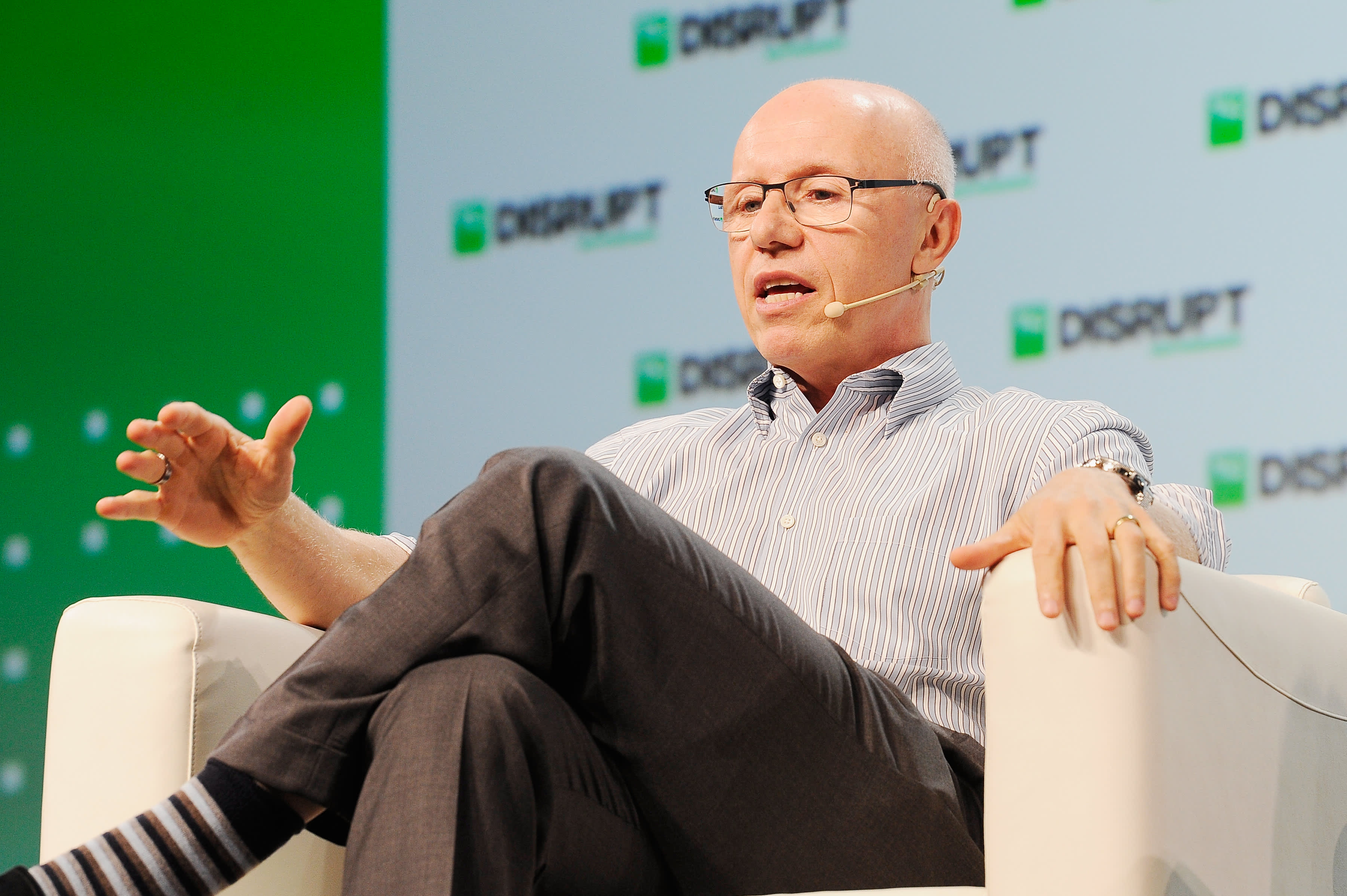What unions could mean for Apple with Zoe Schiffer
Photo Illustration by Grayson Blackmon / The VergeVerge labor reporter on the fight to unionize Continue reading…

This week’s Decoder episode is coming to you a day early because today is Apple’s Worldwide Developers Conference, or WWDC. It’s one of the biggest events of the year for Apple, one of the most important companies in the world. In fact, Apple is the most valuable company in the world, and it posted $18 billion in net profits in its first quarter — the most quarterly profit of any public company in history.
So, as we go into another huge Apple event, I wanted to have Verge labor reporter Zoe Schiffer on to talk about something else that’s happening inside Apple: a brewing push by its retail employees to unionize, store by store, because they’re unhappy with their pay and working conditions.
As Zoe dove deeper into her reporting on Apple’s workplace, she learned about the specific challenges facing Apple Store employees. They struggled with COVID, rude customers, mental health, unhappiness with wages, and lack of advancement. A piece she wrote about it a few months ago was widely shared among those employees, who came to see that they had some common problems and began organizing.
This organizing follows a trend for other front-line employees at other big companies —some tech, some not. Amazon warehouse employees have been involved in a very public, drawn-out fight to unionize. (In May, one New York warehouse voted to unionize while another did not.) In addition, 100 Starbucks locations have voted to unionize, and some Alphabet employees are already part of what’s called a solidarity union.
Zoe is really well-sourced; she has an inside look at this fight. So, she helps us explain how this all works and what it might mean.
One note: I disclose this in the conversation, but The Verge and Vox Media are unionized; I am obviously management, and Zoe is in our union. That didn’t have any bearing on our conversation, but, as you all know, I love a disclosure, so there it is.
Okay, Zoe Schiffer on unionization at Apple Stores and beyond.
Here we go.
This transcript excerpt has been lightly edited for clarity.
So that seems like a pretty important role for those folks. It seems like Apple wants them to buy into the larger mission. Why are they unhappy?
When you look from the outside and compare Apple retail workers to other retail workers, you are saying, “You are paid more, the environment is a little bit better, and you get stock. What is the issue?” Apple retail workers have really bought into this mission. Apple has made such a point of having them watch all of the large Apple events, having an executive speak directly to them, and really galvanizing them about the Apple mission, that they start to compare themselves to Apple corporate. They’re saying, “Okay, you are the most profitable company in the world. You have had the best quarter of any company ever in terms of revenue. Why are we not seeing any of that? Why are you bringing me into the mission and telling me that I am part of this, but then I’m not even paid a fraction of what a corporate employee makes?”
I am assuming that Apple’s response to that is, “Our corporate employees have more skills. They design the camera on the iPhone. There are advertising people.” Do people get paid differently based on their skills?
Yes.
Is that actually what they are saying?
No, Apple would never say that. I don’t think they would ever say, “Corporate employees have higher educational degrees,” because that might not even be necessarily accurate. On the whole, I am sure there are reasons why those people are paid more. I think that they are saying, “Look, we are listening to you. We want to make the environment a little bit better. We will make more opportunities for you to advance at the company.” Retail employees are not asking to get paid what corporate employees get paid. They are asking for $26 an hour for the most part, and that is relatively a small raise in their minds when you look at what Apple is making quarter over quarter.
That feels like a core ask. I just want to put this in contrast to Amazon, which is also facing unionization efforts at its warehouses. It feels like it is easier to understand that story. They are warehouse workers, a classically unionized subset of workers in America, and they have arduous working conditions. We have heard about the robots managing the workers in difficult ways. There is a very controversial anecdote about drivers peeing in bottles that Amazon would refute but the workers would tell you is true. Amazon itself provides educational benefits; it really wants warehouse workers to graduate into corporate, or at least it says it does. It is very loud about those pathways. Is there a reason? Compare and contrast that to Apple’s relationship to its frontline workers.
Can we actually bring in another example too? I think it is really interesting to look at Starbucks, Amazon, and Apple. When we look at Starbucks and Amazon, they both have these acute issues that workers are facing. At Starbucks, it is that people are severely understaffed and overworked. At Amazon, it is the labor conditions that you were talking about. Apple doesn’t have either of those things. Look at the success of the Starbucks campaign versus the Amazon campaign. Two Starbucks locations in Buffalo announced in December that they were filing for a union election, and within six weeks 20 other stores filed for union elections. I think now we are at 250 stores across the country. That is what we mean when we say there was a big unionizing push that ignited the whole country of Starbucks workers.
At Amazon, there was one successful labor union on Staten Island. After that, I think a month later, we had one other union say they were going to file, but they withdrew the petition. That was it. The reasons for that are varied, but one of them — and The New York Times wrote a good piece on this — is that Starbucks workers work close together. They have a lot of time where they are just sitting around with colleagues and a manager is not present. Amazon workers are very isolated and they are not always working with the same people. It is hard to sit around and chat about the reasons for unionizing in the first place. Apple workers are somewhere in between; they do not have acute labor issues. Though many would tell you that they are overworked, stressed, and underpaid, they are on the floor and there is always a store leader present. They are not necessarily sitting around chatting about how to improve their working conditions.
What we have seen so far is that three stores announced that they were unionizing with three separate unions. One of them has already withdrawn their petition and it is unclear whether the other two will be successful. I don’t want to be a downer about this, but I think we are at a point where we really do not know whether Apple is going to go the route of Amazon, a slower slog that might not go anywhere, or the route of Starbucks.
Let’s do a little unionizing 101, because you brought up a bunch of terms and processes there that I think most people are unfamiliar with. You mentioned that there are three separate unions. The formation of a union is actually somewhat of a complex process. Let’s say you are an employee at a random Apple Store. How would you begin the process of unionizing?
I am going to try and get this right because it is really complicated, and I feel like I have to do a refresher every time I write a story. Basically, if you are an Apple retail worker, you start chatting with colleagues about improving your working conditions and some union organizers would tell you at that point you have a union. In Apple corporate’s eyes, you most certainly do not have a union. What you need to do is get 30% of the people who work in your store and are eligible to vote to sign cards, basically a petition, saying that they would vote for a union. At that point, you can petition and file paperwork with the NLRB, the National Labor Relations Board, to say that you intend to have a union vote.
If you have 30%, the NLRB will say, “Okay, you can come.” You will schedule a vote, either in person or through the mail sometimes. If the majority of people who are eligible to vote do so in favor of the union, you have a union. At that point you have to decide on a contract and the company has to come to the table and negotiate with you. That is the power of the union, but it can take years for a contract to actually be ratified.
A full transcript will be available soon.

 Tfoso
Tfoso /cdn.vox-cdn.com/uploads/chorus_image/image/70947413/VRG_ILLO_5270_Decoder_ZoeSchiffer.0.jpg)
































